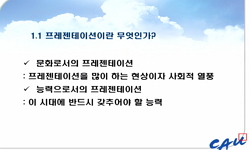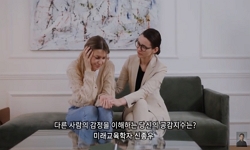이 연구는 ‘대나무 숲’ 현상을 언중의 의식을 표현하고 추구하는 기저 의미를 지닌 통시적 현상으로 고찰하고자 했다. 사회언어학적인 측면에서 현대 통신 수단인 SNS 트위터 공간에서 나...
http://chineseinput.net/에서 pinyin(병음)방식으로 중국어를 변환할 수 있습니다.
변환된 중국어를 복사하여 사용하시면 됩니다.
- 中文 을 입력하시려면 zhongwen을 입력하시고 space를누르시면됩니다.
- 北京 을 입력하시려면 beijing을 입력하시고 space를 누르시면 됩니다.
https://www.riss.kr/link?id=A101928145
- 저자
- 발행기관
- 학술지명
- 권호사항
-
발행연도
2016
-
작성언어
Korean
-
주제어
대나무 숲 ; 대학교 대나무 숲 ; 트위터 ; 통시성 ; 공감 ; Bamboo grove ; university bamboo grove ; twitter ; diachronicity ; sympathy
-
KDC
710
-
등재정보
KCI등재
-
자료형태
학술저널
- 발행기관 URL
-
수록면
37-65(29쪽)
-
KCI 피인용횟수
1
- 제공처
- 소장기관
-
0
상세조회 -
0
다운로드
부가정보
국문 초록 (Abstract)
‘대나무 숲’은 소통과 발화에 관한 사회의 문제점을 언중이 어떻게 해결하고 있는지 보여주는 예이다. 현실에서는 발화와 소통이 제한된 수직적 관계임에도 불구하고 트위터상에서는 표현과 발화가 개방될 수 있다. 언중은 인터넷의 특정한 공간을 생성하여 익명으로 글을 쓰고, 익명 또는 실명으로 댓글을 다는 방식으로 발화와 소통의 개방화를 시도한다. 이것을 ‘임금님 귀는 당나귀 귀’를 산호로서, ‘서동요’, ‘미나리요’, ‘파랑새요’ 등의 민요를 통해, 이 시대에 ‘사장님 귀는 당나귀 귀’, ‘대학교 대나무 숲’ 등의 기능적 유사성이 나타나는 현상에서, 궁극적으로 언중의 발화와 소통의 통시성으로 설명하고자 했다.
구체적으로 2016년 1월 기준 ‘대학교 대나무 숲’ 100여 개 계정 가운데 먼저 계정이 생성된 일부 대학의 예를 분석하여 형식과 내용의 특성을 설명했다. ‘대나무 숲’은 언중의 발화와 소통의 시대적 방식이고, ‘대학교 대나무 숲’은 특수한 지식인층이 사회적 약자로 변모되어 토로, 항변하며 정보를 교환하는 새로운 변모점이 특성으로 나타난다.
이 연구는 ‘대나무 숲’ 현상을 언중의 의식을 표현하고 추구하는 기저 의미를 지닌 통시적 현상으로 고찰하고자 했다. 사회언어학적인 측면에서 현대 통신 수단인 SNS 트위터 공간에서 나타나는 ‘대나무 숲’ 현상을 통해 언중들의 발화와 소통에 대한 연구를 한 것이다.
‘대나무 숲’은 소통과 발화에 관한 사회의 문제점을 언중이 어떻게 해결하고 있는지 보여주는 예이다. 현실에서는 발화와 소통이 제한된 수직적 관계임에도 불구하고 트위터상에서는 표현과 발화가 개방될 수 있다. 언중은 인터넷의 특정한 공간을 생성하여 익명으로 글을 쓰고, 익명 또는 실명으로 댓글을 다는 방식으로 발화와 소통의 개방화를 시도한다. 이것을 ‘임금님 귀는 당나귀 귀’를 산호로서, ‘서동요’, ‘미나리요’, ‘파랑새요’ 등의 민요를 통해, 이 시대에 ‘사장님 귀는 당나귀 귀’, ‘대학교 대나무 숲’ 등의 기능적 유사성이 나타나는 현상에서, 궁극적으로 언중의 발화와 소통의 통시성으로 설명하고자 했다.
구체적으로 2016년 1월 기준 ‘대학교 대나무 숲’ 100여 개 계정 가운데 먼저 계정이 생성된 일부 대학의 예를 분석하여 형식과 내용의 특성을 설명했다. ‘대나무 숲’은 언중의 발화와 소통의 시대적 방식이고, ‘대학교 대나무 숲’은 특수한 지식인층이 사회적 약자로 변모되어 토로, 항변하며 정보를 교환하는 새로운 변모점이 특성으로 나타난다.
다국어 초록 (Multilingual Abstract)
The forums in which the bamboo grove has emerged in society since 2013 has been dwindling due to a variety of external factors. At the same time, a phenomenon has been observed in which such groves reemerge at specific universities and rapidly propagate. Then fact that the bamboo grove discourse form resists elimination and persists in Korean society is seen as the result of a special significance in the nature of its formation. Specifically, it is seen as reflecting the need for setting in which speech communities in the cyber-age can online with anonymity and transcend human alienation in a modern society where communication is difficult. In addition to the historical characteristic of the formation and continuity of the bamboo grove, however, there also appears to be a new meaning that this study seeks to explore.
The characteristics of the bamboo grove are that it serves as a space for speech by disadvantaged segments of society and an open environment of society and an open environment of free expression within an anonymous context. The phenomenon is one in which socially disadvantaged people seek to fine a solution to the limitation of popular lingustic expression. It is also understood to be an attempt to fine a new form of communication by a speech community incapable of free, horizontal expression.
It is in this sense that the social functions of the university bamboo grove as speech space are examined. Moreover, the diachronic aspects of the bamboo grove form are examined in terms of their continuity with sanho and traditional Korean folk songs. The formal characteristics connecting the sanho as the original bamboo grove form, folk songs (chamyo) with specific messages similar to the bamboo forest, and the contemporary university bamboo grove are considered in terms of the elements of forced secrecy and “open secrets.” The analysis focuses specifically on the songs “The Kings Ear Is a Donkeys Ear”, “The Ballad of Seodong”, “The Song of Water Parsely”, and “The Song of the Blue Bird”, as well as the contemporary “The CEOs Ear Is a Donkeys Ear” and the university bamboo grove phenomenon.
The examination shows that the emergence of the bamboo grove is a method for disadvantaged individuals to achieve empathy with their members. The proliferation of this form is seen not simply as a one-off trend of the times, but as a pheonomenon with significance in terms of the emergence and persistence of continuity with traditional speech Korean people.
This study examines the “bamboo grove” phenomenon on Twitter from a diachronic perspective, considering its motivations, formation process, and significance. The bamboo grove was chosen as a topic for diachronic examination because of its persiste...
This study examines the “bamboo grove” phenomenon on Twitter from a diachronic perspective, considering its motivations, formation process, and significance. The bamboo grove was chosen as a topic for diachronic examination because of its persistence and recent propagation at universities.
The forums in which the bamboo grove has emerged in society since 2013 has been dwindling due to a variety of external factors. At the same time, a phenomenon has been observed in which such groves reemerge at specific universities and rapidly propagate. Then fact that the bamboo grove discourse form resists elimination and persists in Korean society is seen as the result of a special significance in the nature of its formation. Specifically, it is seen as reflecting the need for setting in which speech communities in the cyber-age can online with anonymity and transcend human alienation in a modern society where communication is difficult. In addition to the historical characteristic of the formation and continuity of the bamboo grove, however, there also appears to be a new meaning that this study seeks to explore.
The characteristics of the bamboo grove are that it serves as a space for speech by disadvantaged segments of society and an open environment of society and an open environment of free expression within an anonymous context. The phenomenon is one in which socially disadvantaged people seek to fine a solution to the limitation of popular lingustic expression. It is also understood to be an attempt to fine a new form of communication by a speech community incapable of free, horizontal expression.
It is in this sense that the social functions of the university bamboo grove as speech space are examined. Moreover, the diachronic aspects of the bamboo grove form are examined in terms of their continuity with sanho and traditional Korean folk songs. The formal characteristics connecting the sanho as the original bamboo grove form, folk songs (chamyo) with specific messages similar to the bamboo forest, and the contemporary university bamboo grove are considered in terms of the elements of forced secrecy and “open secrets.” The analysis focuses specifically on the songs “The Kings Ear Is a Donkeys Ear”, “The Ballad of Seodong”, “The Song of Water Parsely”, and “The Song of the Blue Bird”, as well as the contemporary “The CEOs Ear Is a Donkeys Ear” and the university bamboo grove phenomenon.
The examination shows that the emergence of the bamboo grove is a method for disadvantaged individuals to achieve empathy with their members. The proliferation of this form is seen not simply as a one-off trend of the times, but as a pheonomenon with significance in terms of the emergence and persistence of continuity with traditional speech Korean people.
목차 (Table of Contents)
- 〈벼리〉
- 1. 머리말
- 2. 발화 공간으로서 ‘대나무 숲’의 기능
- 3. 산호ㆍ민요ㆍ‘대나무 숲’의 유사성
- 4. 맺음말
- 〈벼리〉
- 1. 머리말
- 2. 발화 공간으로서 ‘대나무 숲’의 기능
- 3. 산호ㆍ민요ㆍ‘대나무 숲’의 유사성
- 4. 맺음말
- 〈참고 문헌〉
- 〈abstract〉
참고문헌 (Reference)
1 황유선, "트위터에서의 의견 지도력과 트위터 이용패턴: 이용동기, 트윗 이용패턴, 그리고 유형별 사례분석" 한국방송학회 24 (24): 365-404, 2010
2 안재웅, "트위터 '대나무 숲' 현상을 통해 바라본 사회적 소통 증진의 가능성 탐색" 사이버커뮤니케이션학회 30 (30): 151-189, 2013
3 이은주, "컴퓨터 매개 커뮤니케이션으로서의 트위터: 향후 연구의 방향과 과제" 언론정보연구소 48 (48): 29-58, 2011
4 김 경호, "참요 시대의 징후를 노래하다" 한얼미디어 2012
5 라 도삼, "인터넷 한국의 10가지 쟁점" 역사넷 2002
6 조윤경, "인터넷 공간에 대한 인식과 교류행위의 관계: 친밀성과 위험성 인식을 중심으로" 사이버커뮤니케이션학회 29 (29): 305-350, 2012
7 이 탁, "언어상으로 고찰한 우리 고대 사회상의 편모" 한글학회 (124) : 215-230, 1959
8 김 방한, "언어 변화에 관한 사회언어학적 연구" 한글학회 (194) : 205-228, 1986
9 민찬, "서동요 해독 및 해석의 관점" 규장각한국학연구원 (33) : 69-90, 2004
10 정 태영, "사이버스페이스 문화 읽기" 나남출판 1997
1 황유선, "트위터에서의 의견 지도력과 트위터 이용패턴: 이용동기, 트윗 이용패턴, 그리고 유형별 사례분석" 한국방송학회 24 (24): 365-404, 2010
2 안재웅, "트위터 '대나무 숲' 현상을 통해 바라본 사회적 소통 증진의 가능성 탐색" 사이버커뮤니케이션학회 30 (30): 151-189, 2013
3 이은주, "컴퓨터 매개 커뮤니케이션으로서의 트위터: 향후 연구의 방향과 과제" 언론정보연구소 48 (48): 29-58, 2011
4 김 경호, "참요 시대의 징후를 노래하다" 한얼미디어 2012
5 라 도삼, "인터넷 한국의 10가지 쟁점" 역사넷 2002
6 조윤경, "인터넷 공간에 대한 인식과 교류행위의 관계: 친밀성과 위험성 인식을 중심으로" 사이버커뮤니케이션학회 29 (29): 305-350, 2012
7 이 탁, "언어상으로 고찰한 우리 고대 사회상의 편모" 한글학회 (124) : 215-230, 1959
8 김 방한, "언어 변화에 관한 사회언어학적 연구" 한글학회 (194) : 205-228, 1986
9 민찬, "서동요 해독 및 해석의 관점" 규장각한국학연구원 (33) : 69-90, 2004
10 정 태영, "사이버스페이스 문화 읽기" 나남출판 1997
11 마크스미스, "사이버 공간과 공동체" 나남출판 2001
12 김 하수, "문제로서의 언어 3, 4" 커뮤니케이션북스 2014
13 국제어문학회, "디지털 시대의 언어와 문학 연구" 국학자료원 2002
14 전 병용, "디지털 시대의 광고와 언어" 글로벌 1999
15 이 석주, "대중매체와 언어" 도서출판 역락 2002
16 김 종택, "국어화용론" 형설출판사 1986
17 노 대규, "국어의 화용의미론" 국학자료원 2002
18 김정태, "광고언어의 동음이표기(同音異表記)에 대하여" 어문연구학회 73 : 61-86, 2012
19 成武慶, "韓國 讖謠의 연구 : 口述狀況을 중심으로" 成均館大學校 大學院 1991
20 "hittps://www.facebook.com/news1kr" 대나무 숲
21 "hittps://namu.wiki/w/" 대나무 숲(대학교)
동일학술지(권/호) 다른 논문
-
- 한글학회
- 이혜원(Lee Hye-won)
- 2016
- KCI등재
-
- 한글학회
- 니에 바오메이(??梅)
- 2016
- KCI등재
-
- 한글학회
- 구현옥(Koo Hyun-ok)
- 2016
- KCI등재
-
- 한글학회
- 남택승(Nam Taek-seung)
- 2016
- KCI등재
분석정보
인용정보 인용지수 설명보기
학술지 이력
| 연월일 | 이력구분 | 이력상세 | 등재구분 |
|---|---|---|---|
| 2027 | 평가예정 | 재인증평가 신청대상 (재인증) | |
| 2021-01-01 | 평가 | 등재학술지 유지 (재인증) |  |
| 2018-01-01 | 평가 | 등재학술지 유지 (등재유지) |  |
| 2015-01-01 | 평가 | 등재학술지 유지 (등재유지) |  |
| 2011-01-01 | 평가 | 등재학술지 유지 (등재유지) |  |
| 2009-01-01 | 평가 | 등재학술지 유지 (등재유지) |  |
| 2007-01-01 | 평가 | 등재학술지 유지 (등재유지) |  |
| 2004-01-01 | 평가 | 등재학술지 선정 (등재후보2차) |  |
| 2003-01-01 | 평가 | 등재후보 1차 PASS (등재후보1차) |  |
| 2002-01-01 | 평가 | 등재후보 1차 FAIL (등재후보1차) |  |
| 1998-07-01 | 평가 | 등재후보학술지 선정 (신규평가) |  |
학술지 인용정보
| 기준연도 | WOS-KCI 통합IF(2년) | KCIF(2년) | KCIF(3년) |
|---|---|---|---|
| 2016 | 0.84 | 0.84 | 0.77 |
| KCIF(4년) | KCIF(5년) | 중심성지수(3년) | 즉시성지수 |
| 0.87 | 0.83 | 1.332 | 0.3 |




 DBpia
DBpia







